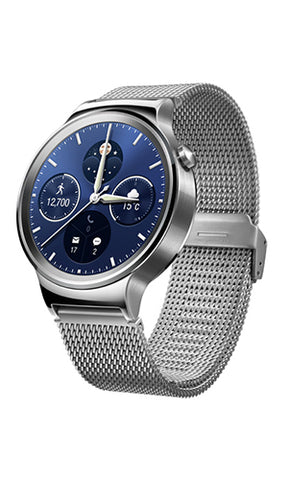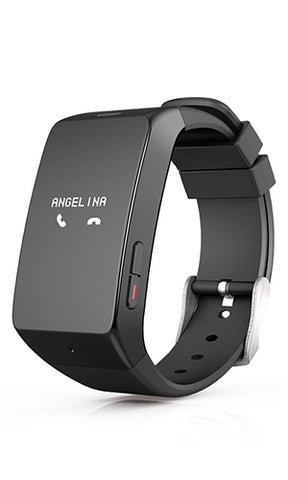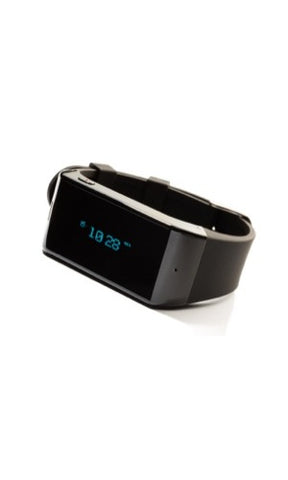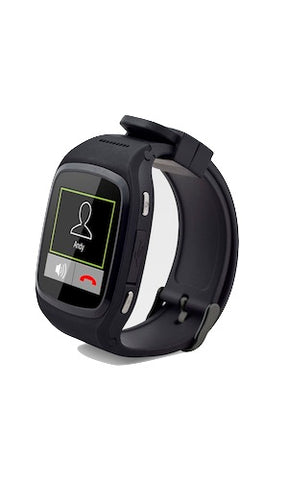There’s a new distraction in my car (and it’s on my wrist!)
Written By
Luis Rincon
Wearables are everywhere. From Apple Watch to Android Wear, these connected devices now permeate our daily lives. With predictions of more than 25.7 million smart wearables to be shipped in 2015, wearable technology will continue to be at our fingertips from the moment we wake up to the moment we go to sleep. Technology is helping us stay connected, but there’s one place where we need to set some boundaries for wearable devices: the car.
Wearables and distracted driving
Distracted driving isn’t a new thing. According to Distraction.gov, there were more than 3,100 fatalities and 424,000 injuries due to distracted driving in 2013 — and that’s before wearable tech became a consideration. We’re well aware that we shouldn’t text and drive, and we’ve become accustomed to keeping our phone out of arm’s reach in the car. but it’s harder to do when it comes to something that’s strapped to our bodies. As someone who has personally reviewed multiple smartwatches from the Apple Watch to Moto 360 by Motorola, I myself have succumbed to the temptation of checking a wearable device while driving. Often, the not-so-subtle vibration or taps on the wrist make it hard not to.
More reading: Ford smartwatch app to keep company relevant as consumers demand connectivity
There’s a huge gray area when it comes to wearables and driving. Most states and even some municipalities have some sort of distracted driving law in place, but most of these don’t specifically cover wearable devices. For instance, Austin, Texas recently passed a city ordinance taking the Texas laws further by banning the use of all electronic hand-held devices while operating a motor vehicle. Austin defines portable electronic devices as being handheld and lists products including mobile phones, GPS navigation systems, and “portable computing devices.” Such broad definitions could of course include wearables, but the argument can be made that wearable tech is not handheld, and it’s also a bluetooth device, which are often excluded in these clauses.
Although the conversation around wearables in the car is only beginning to develop, one L.A. attorney has already filed a lawsuit against Apple, Samsung, Microsoft, and Google requesting the tech giants finance a $1 billion public education campaign on the dangers of wearing a smartwatch while driving. Legal action around wearable tech was bound to begin, but the questions remains: Who is actually responsible?
It’s you, not me
Right now, consumer electronic companies place the responsibility on the user — and justly so. If you’re wearing the device, you are in the driver’s seat, so to speak. Thus, you are responsible for what happens while you’re wearing it. The Apple Watch User Guide warns users about “avoiding distractions that could lead to dangerous situations” by saying that “Navigation Maps, directions, and location-based apps depend on data services…Do not use these services while performing activities that require your full attention. Always comply with posted signs and the laws and regulations in the areas where you are using Apple Watch, and always use common sense.” Ultimately, it’s our own responsibility to use common sense when driving and that isn’t limited to when we’re wearing or using smart devices.
The Motorola Moto 360 (smartwatch) user guide goes into more detail about how users of their device should handle it while driving. “Making calls or using applications while driving may cause distraction, and may be prohibited or restricted in certain areas — always obey local laws and regulations for the use of mobile devices and accessories in the vehicle.”
You might also like: The best smartwatches in 2015, so far
While it’s a good business practice for wearable device makers to include some sort of distracted driving caveat in their user manual, the reality is that most consumers don’t read user manuals or Terms of Service.
Nonetheless, the responsibility lies principally with the consumer. Manufacturers have a duty to state where they think that these devices should not be used or where they may pose a threat of distraction. But at the end of the day they’re not the one wearing it, and manufacturers may likely be trying to cover all bases from a legal liability standpoint. Though dangers of distracted driving sound like common sense, how many people do you see on a daily basis that still text and drive after the millions of dollars that have been spent on PSAs and car updates to encourage them not to? What makes us think it will be any different with wearables such as smartwatches?
What can companies do to help?
As wearables continue to grow in popularity with mainstream consumers, I predict we will see updates to distracted driving laws. I also think there could be an opportunity for a “car mode,” similar to airplane mode, that can be used on wearables and smartphones while driving. Getting people to actually use car mode would be a different story, but it would be a positive next step.
And while PSAs are informative, the fear tactics aren’t as effective as we’d like them to be. I believe a rewards system for using an offering such as car mode described above, similar to what insurance companies offer as incentives for safe driving. For example, Progressive’s Snapshot which allows the company to monitor vehicle stats and driving behavior to classify the driver’s safeness and adjust their insurance premium appropriately, could be adapted to include car mode. I think consumers would be more inclined to put down their smartphone or smartwatch if they could save some money at the same or earn points towards purchases… the beauty of a smartwatch is that turning on car mode could be as simple as a flick of the wrist, turning on car mode may be as simple as the flick of a wrist.
As is par for the course, technology continues to advance and regulators try to catch up. While we wait for the laws to update, we all need to do our part to keep each other safe on the road. For now, we can look to organizations like People Against Distracted Driving (PADD) and AT&T’s It Can Wait initiative to help educate drivers on the safety risks of distracted driving.
About Luis Rincon:
Luis Rincon is the co-founder and CEO of Wearables.com. Luis holds both a business and law degree, has a deep background in consumer facing e-commerce, and is a regular technology expert commentator on national news and business shows.
Tags: Featured Items, HomePage Featured, Internet of Things




